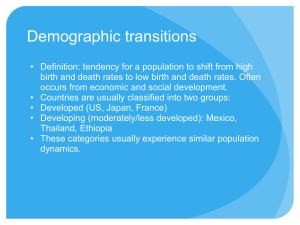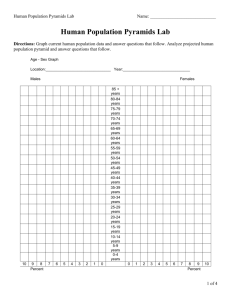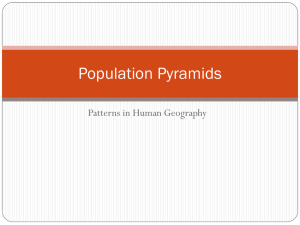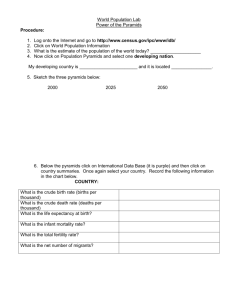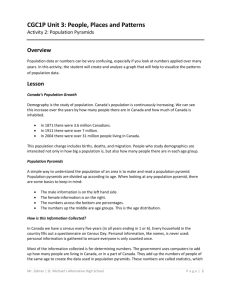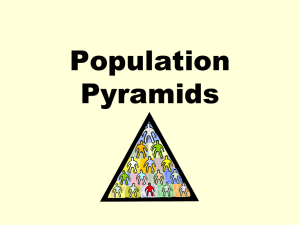File
advertisement
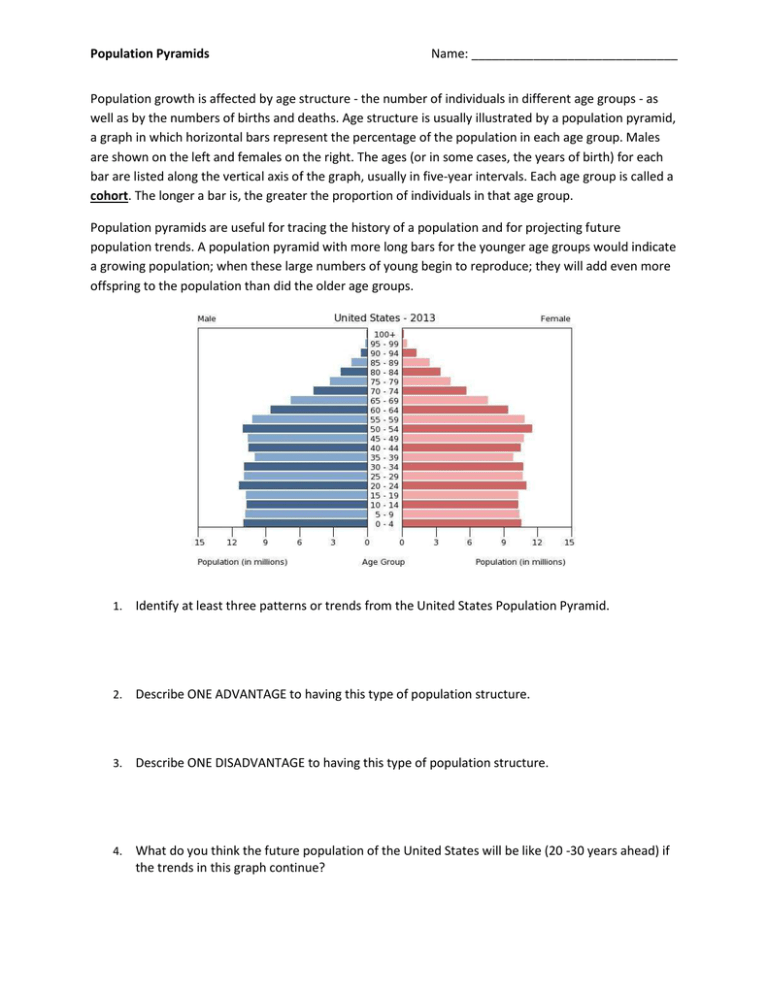
Population Pyramids Name: ______________________________ Population growth is affected by age structure - the number of individuals in different age groups - as well as by the numbers of births and deaths. Age structure is usually illustrated by a population pyramid, a graph in which horizontal bars represent the percentage of the population in each age group. Males are shown on the left and females on the right. The ages (or in some cases, the years of birth) for each bar are listed along the vertical axis of the graph, usually in five-year intervals. Each age group is called a cohort. The longer a bar is, the greater the proportion of individuals in that age group. Population pyramids are useful for tracing the history of a population and for projecting future population trends. A population pyramid with more long bars for the younger age groups would indicate a growing population; when these large numbers of young begin to reproduce; they will add even more offspring to the population than did the older age groups. 1. Identify at least three patterns or trends from the United States Population Pyramid. 2. Describe ONE ADVANTAGE to having this type of population structure. 3. Describe ONE DISADVANTAGE to having this type of population structure. 4. What do you think the future population of the United States will be like (20 -30 years ahead) if the trends in this graph continue? Population Pyramids Name: ______________________________ Country: ___________________________ Country: _____________________________ Population Pyramids Name: ______________________________ With a partner, compare your Population Pyramids. Answer the questions below using the data from each of the countries. 1. Describe the population structure (NOT THE SHAPE, but what the structure tells you about the population) of the 2013 Population Pyramids. a. Bangladesh: b. India: c. Bulgaria: d. Mexico: 2. What amount of the population in your age cohort (15-19) are males? a. Bangladesh ______ c. Bulgaria ______ b. India ______ d. Mexico ______ 3. What amount of the population in your age cohort (15-19) are females? a. Bangladesh ______ c. Bulgaria ______ b. India ______ d. Mexico ______ 4. Describe two similarities or patterns in the Population Pyramids. 5. Describe two differences in the Population Pyramids. 6. Which Population Pyramid has the largest elderly population? ___________________________ Population Pyramids Name: ______________________________ 7. Which Population Pyramid has the smallest infant population? ___________________________

